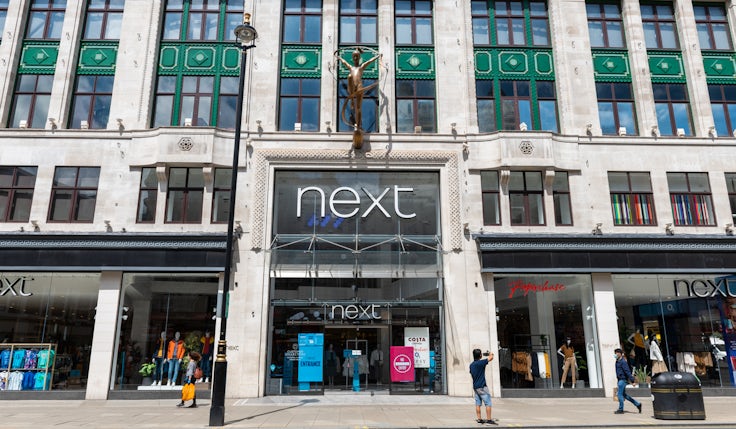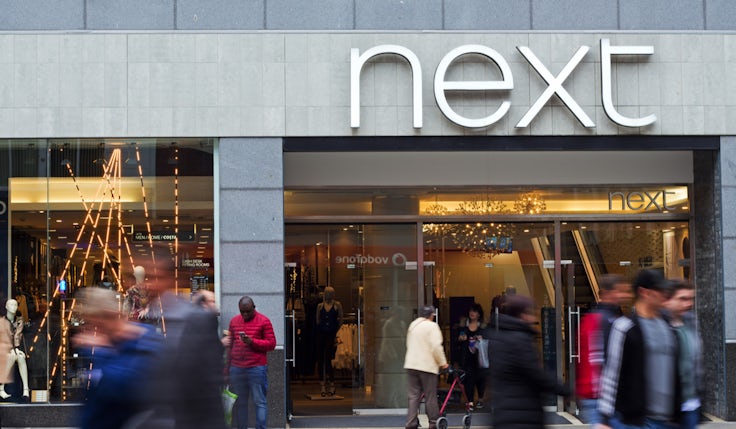Digital marketing ROI prompts Next to increase budgets for 2022
The retailer plans to invest “as much as it possibly can” in digital marketing, after adopting “new and more effective ways” to maximise return.
 Retailer Next is set to ramp up its online marketing spend after seeing a rise in return on investment last year.
Retailer Next is set to ramp up its online marketing spend after seeing a rise in return on investment last year.
The 12 months to January 2022 saw increases in both sales and profits at Next. Profit before tax of £823m represented a 140% increase on last year and a 10% increase on the pre-pandemic financial year of 2019/2020.
Online sales grew to reach £3.1bn, compared to physical retail sales of £1.4bn. However, retail sales did see growth of 50.1% year on year, as stores reopened following the Covid-19 lockdown.
The company made significant capital investments in its warehouse and website technology during the year, crediting its ability to scale up its online business for the strong performance. As it moves further into the uncertain economic landscape of 2022, Next plans to further capitalise on its online strength.
We have found new and more effective ways of using digital marketing and that is really what has driven the increase.
Lord Wolfson, Next
“In terms of marketing online we will spend more in the year ahead than we spent last year, though we are not going to publish the exact amount we will spend,” chief executive Lord Simon Wolfson told Marketing Week.
“We have found new and more effective ways of using digital marketing and that is really what has driven the increase. All of the marketing we do, every campaign we do, we measure the return. As long as the marketing investment that we are making hits the investment hurdles that we set, we continue to invest as much as we possibly can.”
Explaining the amount Next spends on marketing is driven by the return, based on current success the business is in a position to spend “more next year than last year.”
Next continues to ramp up digital marketing spend as online sales surge
While spend is likely to be spread across the year, an expected rise in media prices late in the year may see more activity earlier on, added Wolfson.
“The one caveat is that towards the back end of the year, we think it is likely that with the World Cup coming along there might be an increase in prices and that may push the costs the other way. My guess is that we might see a slight moderation of spending at the end of the year. But I think that will be more than made up with what we spend in the rest of the year,” he said.
There is no plan to increase marketing spend around Next stores, with Wolfson claiming the window displays are the “most effective marketing the stores have.”
Strength in online
Wolfson says Next had a better year than expected in 2021, in part due to the underlying strength of consumer spending in the UK.
“We think that was about spending pent-up savings made during lockdown. As we go into next year we are moving into a very different consumer environment and, in many ways, the strong comparatives from last year make the year ahead even tougher,” he said.
Store sales have improved since Covid restrictions ended. The retailer now expects its online business in the UK to grow at the rate of 4-5% per year, while its physical retail business declines at around 7%. Wolfson explained his prediction has altered to become less pessimistic about physical stores and slightly less optimistic about online performance.
The hit from closing down operations in Ukraine and Russia, which the company predicts will be about £18m, will be partly offset by the changing margin mix this creates in the UK.
Next ups online marketing spend as return on investment exceeds expectations
Next also credited its rapidly-growing third-party branded business for “another exceptionally productive year”.
“We have navigated our way through the pandemic and the structural changes affecting our sector, to deliver record sales and earnings per share,” said Wolfson.
“We went into the pandemic with a well established online business and a diverse product offer. This allowed our online business to make up for much of the sales we lost in retail; and accommodate the dramatic shift in sales between different product categories experienced during the lockdown.”
The company did warn of rising cost pressures that are likely to hit consumers in the form of increased prices later this year.
Analysts have responded positively to the retailer’s performance, saying it is now well-placed to weather forthcoming inflationary challenges, although they question the gulf between in-store and online sales.
“The disparity in the performance of Next’s online platform and stores is stark, with two-year comparatives at 44.6% higher and 22.7% lower respectively,” says Globaldata senior analyst Emily Salter.
“Next has simply created a more compelling and relevant proposition online with its broad range of products and brands, and though it continues to innovate in its stores, such as by adding a Gap concession to its flagship Oxford Street store, online will continue to far outperform in FY 2022/23.”
The closure of operations in Russia and Ukraine, coupled with a worsening outlook for UK inflation will be a challenge. However Salter believes Next’s mass market positioning and presence of more essential products, especially childrenswear, should help the retailer weather the storm.






